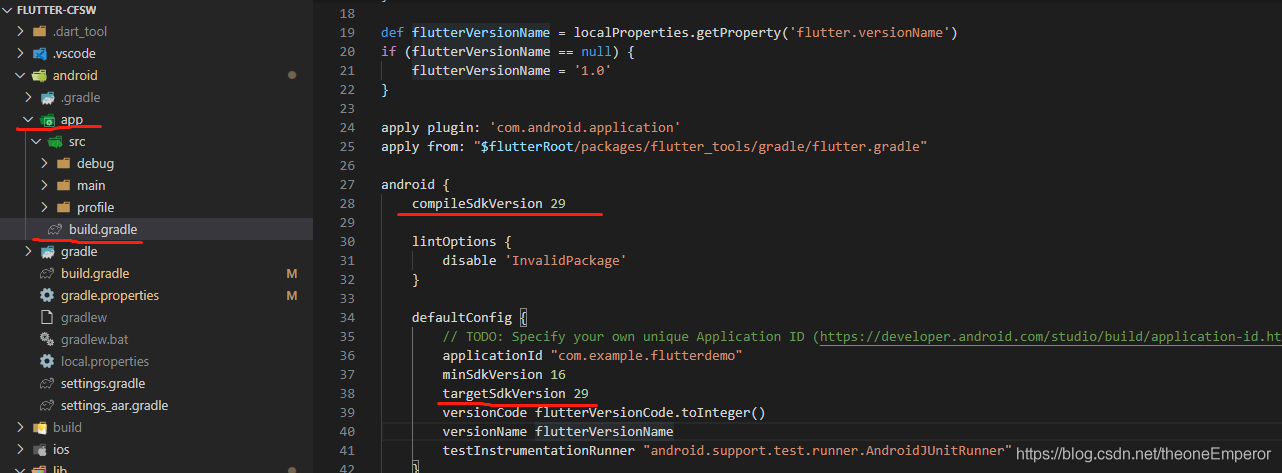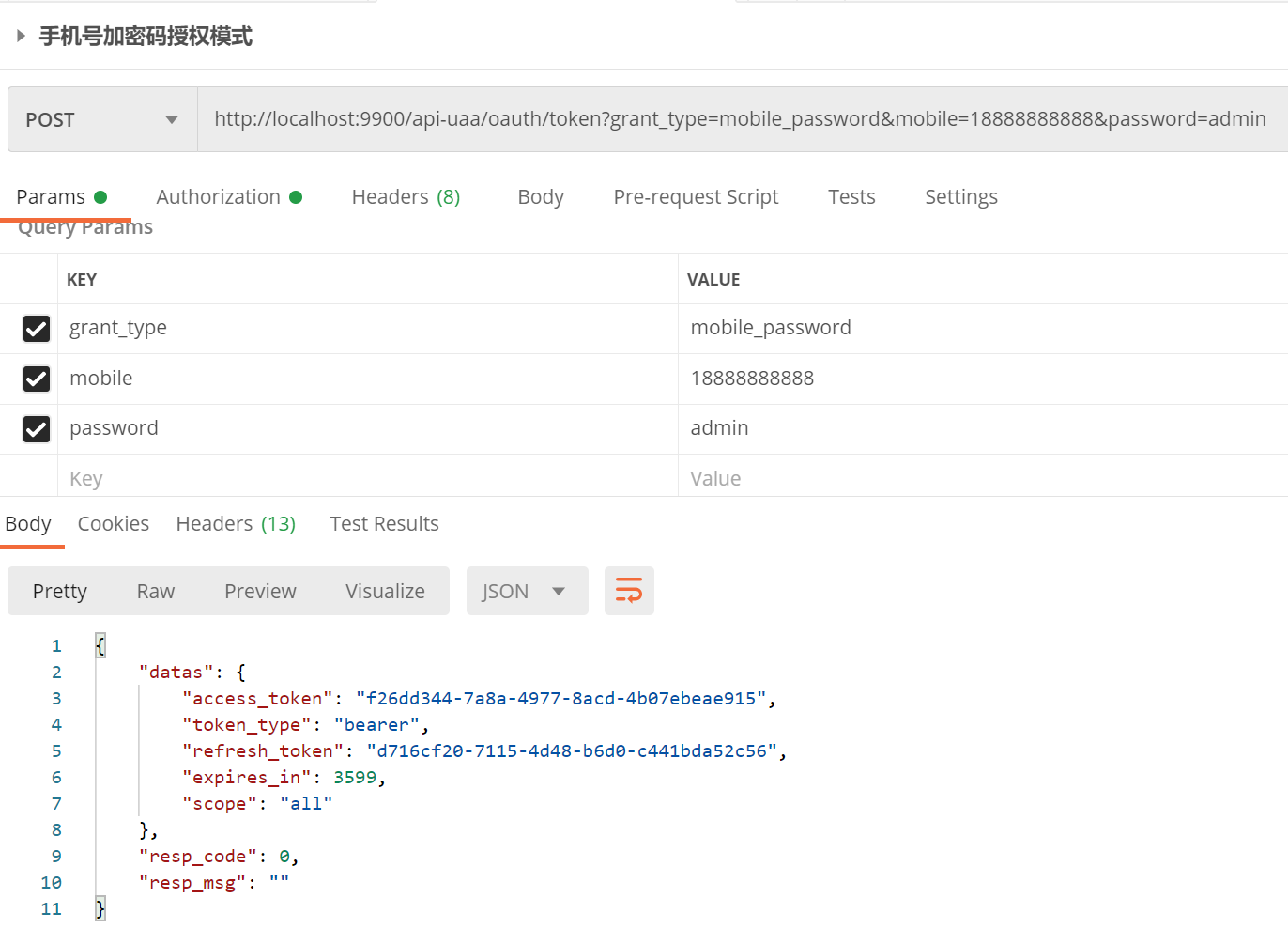Spring Security如何優(yōu)雅的增加OAuth2協(xié)議授權(quán)模式
一、什么是OAuth2協(xié)議?
OAuth 2.0 是一個關(guān)于授權(quán)的開放的網(wǎng)絡(luò)協(xié)議,是目前最流行的授權(quán)機制。
數(shù)據(jù)的所有者告訴系統(tǒng),同意授權(quán)第三方應(yīng)用進入系統(tǒng),獲取這些數(shù)據(jù)。系統(tǒng)從而產(chǎn)生一個短期的進入令牌(token),用來代替密碼,供第三方應(yīng)用使用。
由于授權(quán)的場景眾多,OAuth 2.0 協(xié)議定義了獲取令牌的四種授權(quán)方式,分別是:
授權(quán)碼模式:授權(quán)碼模式(authorization code)是功能最完整、流程最嚴密的授權(quán)模式。它的特點就是通過客戶端的后臺服務(wù)器,與'服務(wù)提供商'的認證服務(wù)器進行互動。 簡化模式:簡化模式(implicit grant type)不通過第三方應(yīng)用程序的服務(wù)器,直接在瀏覽器中向認證服務(wù)器申請令牌,跳過了'授權(quán)碼'這個步驟,因此得名。所有步驟在瀏覽器中完成,令牌對訪問者是可見的,且客戶端不需要認證。 密碼模式:密碼模式(Resource Owner Password Credentials Grant)中,用戶向客戶端提供自己的用戶名和密碼。客戶端使用這些信息,向'服務(wù)商提供商'索要授權(quán)。 客戶端模式:客戶端模式(Client Credentials Grant)指客戶端以自己的名義,而不是以用戶的名義,向'服務(wù)提供商'進行認證。嚴格地說,客戶端模式并不屬于OAuth框架所要解決的問題。在這種模式中,用戶直接向客戶端注冊,客戶端以自己的名義要求'服務(wù)提供商'提供服務(wù),其實不存在授權(quán)問題。四種授權(quán)模式分別使用不同的 grant_type 來區(qū)分
二、為什么要自定義授權(quán)類型?
雖然 OAuth2 協(xié)議定義了4種標準的授權(quán)模式,但是在實際開發(fā)過程中還是遠遠滿足不了各種變態(tài)的業(yè)務(wù)場景,需要我們?nèi)U展。
例如增加圖形驗證碼、手機驗證碼、手機號密碼登錄等等的場景
而常見的做法都是通過增加 過濾器Filter 的方式來擴展 Spring Security 授權(quán),但是這樣的實現(xiàn)方式有兩個問題:
脫離了 OAuth2 的管理 不靈活:例如系統(tǒng)使用 密碼模式 授權(quán),網(wǎng)頁版需要增加圖形驗證碼校驗,但是手機端APP又不需要的情況下,使用增加 Filter 的方式去實現(xiàn)就比較麻煩了。所以目前在 Spring Security 中比較優(yōu)雅和靈活的擴展方式就是通過自定義 grant_type 來增加授權(quán)模式。
三、實現(xiàn)思路
在擴展之前首先需要先了解 Spring Security 的整個授權(quán)流程,我以 密碼模式 為例去展開分析,如下圖所示

3.1. 流程分析
整個授權(quán)流程關(guān)鍵點分為以下兩個部分:
第一部分:關(guān)于授權(quán)類型 grant_type 的解析
每種 grant_type 都會有一個對應(yīng)的 TokenGranter 實現(xiàn)類。 所有 TokenGranter 實現(xiàn)類都通過 CompositeTokenGranter 中的 tokenGranters 集合存起來。 然后通過判斷 grantType 參數(shù)來定位具體使用那個 TokenGranter 實現(xiàn)類來處理授權(quán)。第二部分:關(guān)于授權(quán)登錄邏輯
每種 授權(quán)方式 都會有一個對應(yīng)的 AuthenticationProvider 實現(xiàn)類來實現(xiàn)。 所有 AuthenticationProvider 實現(xiàn)類都通過 ProviderManager 中的 providers 集合存起來。 TokenGranter 類會 new 一個 AuthenticationToken 實現(xiàn)類,如 UsernamePasswordAuthenticationToken 傳給 ProviderManager 類。 而 ProviderManager 則通過 AuthenticationToken 來判斷具體使用那個 AuthenticationProvider 實現(xiàn)類來處理授權(quán)。具體的登錄邏輯由 AuthenticationProvider 實現(xiàn)類來實現(xiàn),如 DaoAuthenticationProvider。
3.2. 擴展分析
根據(jù)上面的流程,擴展分為以下兩種場景
場景一:只對原有的授權(quán)邏輯進行增強或者擴展,如:用戶名密碼登錄前增加圖形驗證碼校驗。
該場景需要定義一個新的 grantType 類型,并新增對應(yīng)的 TokenGranter 實現(xiàn)類 添加擴展內(nèi)容,然后加到 CompositeTokenGranter 中的 tokenGranters 集合里即可。
參考代碼:PwdImgCodeGranter.java
場景二:新加一種授權(quán)方式,如:手機號加密碼登錄。
該場景需要實現(xiàn)以下內(nèi)容:
定義一個新的 grantType 類型,并新增對應(yīng)的 TokenGranter 實現(xiàn)類添加到 CompositeTokenGranter 中的 tokenGranters 集合里 新增一個 AuthenticationToken 實現(xiàn)類,用于存放該授權(quán)所需的信息。 新增一個 AuthenticationProvider 實現(xiàn)類 實現(xiàn)授權(quán)的邏輯,并重寫 supports 方法綁定步驟二的 AuthenticationToken 實現(xiàn)類參考代碼:MobilePwdGranter.java
四、代碼實現(xiàn)
下面以 場景二 新增手機號加密碼授權(quán)方式為例,展示核心的代碼實現(xiàn)
4.1. 創(chuàng)建 AuthenticationToken 實現(xiàn)類
創(chuàng)建 MobileAuthenticationToken 類,用于存儲手機號和密碼信息
public class MobileAuthenticationToken extends AbstractAuthenticationToken {private static final long serialVersionUID = SpringSecurityCoreVersion.SERIAL_VERSION_UID;private final Object principal;private Object credentials;public MobileAuthenticationToken(String mobile, String password) {super(null);this.principal = mobile;this.credentials = password;setAuthenticated(false);}public MobileAuthenticationToken(Object principal, Object credentials, Collection<? extends GrantedAuthority> authorities) {super(authorities);this.principal = principal;this.credentials = credentials;super.setAuthenticated(true);}@Overridepublic Object getCredentials() {return this.credentials;}@Overridepublic Object getPrincipal() {return this.principal;}@Overridepublic void setAuthenticated(boolean isAuthenticated) {if (isAuthenticated) {throw new IllegalArgumentException('Cannot set this token to trusted - use constructor which takes a GrantedAuthority list instead');}super.setAuthenticated(false);}@Overridepublic void eraseCredentials() {super.eraseCredentials();}}
4.2. 創(chuàng)建 AuthenticationProvider 實現(xiàn)類
創(chuàng)建 MobileAuthenticationProvider 類,實現(xiàn)登錄邏輯,并綁定 MobileAuthenticationToken 類
@Setterpublic class MobileAuthenticationProvider implements AuthenticationProvider { private ZltUserDetailsService userDetailsService; private PasswordEncoder passwordEncoder; @Override public Authentication authenticate(Authentication authentication) { MobileAuthenticationToken authenticationToken = (MobileAuthenticationToken) authentication; String mobile = (String) authenticationToken.getPrincipal(); String password = (String) authenticationToken.getCredentials(); UserDetails user = userDetailsService.loadUserByMobile(mobile); if (user == null) { throw new InternalAuthenticationServiceException('手機號或密碼錯誤'); } if (!passwordEncoder.matches(password, user.getPassword())) { throw new BadCredentialsException('手機號或密碼錯誤'); } MobileAuthenticationToken authenticationResult = new MobileAuthenticationToken(user, password, user.getAuthorities()); authenticationResult.setDetails(authenticationToken.getDetails()); return authenticationResult; } @Override public boolean supports(Class<?> authentication) { return MobileAuthenticationToken.class.isAssignableFrom(authentication); }}
4.3. 創(chuàng)建 TokenGranter 實現(xiàn)類
創(chuàng)建 MobilePwdGranter 類并定義 grant_type 的值為 mobile_password
public class MobilePwdGranter extends AbstractTokenGranter { private static final String GRANT_TYPE = 'mobile_password'; private final AuthenticationManager authenticationManager; public MobilePwdGranter(AuthenticationManager authenticationManager, AuthorizationServerTokenServices tokenServices , ClientDetailsService clientDetailsService, OAuth2RequestFactory requestFactory) { super(tokenServices, clientDetailsService, requestFactory, GRANT_TYPE); this.authenticationManager = authenticationManager; } @Override protected OAuth2Authentication getOAuth2Authentication(ClientDetails client, TokenRequest tokenRequest) { Map<String, String> parameters = new LinkedHashMap<>(tokenRequest.getRequestParameters()); String mobile = parameters.get('mobile'); String password = parameters.get('password'); parameters.remove('password'); Authentication userAuth = new MobileAuthenticationToken(mobile, password); ((AbstractAuthenticationToken) userAuth).setDetails(parameters); userAuth = authenticationManager.authenticate(userAuth); if (userAuth == null || !userAuth.isAuthenticated()) { throw new InvalidGrantException('Could not authenticate mobile: ' + mobile); } OAuth2Request storedOAuth2Request = getRequestFactory().createOAuth2Request(client, tokenRequest); return new OAuth2Authentication(storedOAuth2Request, userAuth); }}
4.4. 加到 CompositeTokenGranter 中的集合里
// 添加手機號加密碼授權(quán)模式tokenGranters.add(new MobilePwdGranter(authenticationManager, tokenServices, clientDetailsService, requestFactory));
4.5. 測試
使用以下地址,指定 grant_type 為 mobile_password 進行授權(quán)獲取 access_token
/oauth/token?grant_type=mobile_password&mobile={mobile}&password={password}

五、參考樣例
詳細的代碼實現(xiàn)可以參考
https://gitee.com/zlt2000/microservices-platform/tree/master/zlt-uaa
到此這篇關(guān)于Spring Security如何優(yōu)雅的增加OAuth2協(xié)議授權(quán)模式的文章就介紹到這了,更多相關(guān)Spring Security OAuth2內(nèi)容請搜索好吧啦網(wǎng)以前的文章或繼續(xù)瀏覽下面的相關(guān)文章希望大家以后多多支持好吧啦網(wǎng)!
相關(guān)文章:

 網(wǎng)公網(wǎng)安備
網(wǎng)公網(wǎng)安備